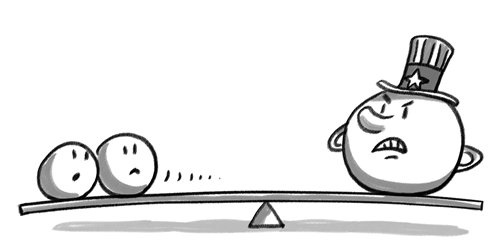
(Photo: Global Times)
US Secretary of State Mike Pompeo announced $113 million as a down payment in US economic commitment for peace and prosperity in the Indo-Pacific region. A day later, Australian Foreign Minister Julie Bishop announced a framework with Japan and the US on infrastructure development in the region. Meanwhile, Chinese State Councilor and Foreign Minister Wang Yi met with his Japanese counterpart Taro Kono on Thursday on the sidelines of ASEAN Foreign Ministers' Meeting, agreeing to work on organizing Japanese Prime Minister Shinzo Abe's visit to China this year.
When US trade protectionism has drawn scorn across the international community, US President Donald Trump's administration is suddenly paying more attention to its Indo-Pacific strategy that underscores multilateral free trade, aiming to seek new growth engines and court traditional allies like Japan and Australia.
After Trump offered a glimpse into the Indo-Pacific strategy during his Asia tour in November, the Abe government has become its most active supporter. Pompeo's announcement of $113 million in funding is a first substantive step by the Trump administration on the Indo-Pacific strategy, but the size of the corpus is small even as a down payment to meet the gigantic needs of the region.
This makes US allies like Japan and other Indo-Pacific countries suspect Washington's sincerity. By contrast, China has invested tens of billions of dollars in infrastructure in countries along the Belt and Road with commitment to common prosperity. Simply judging by the faith Washington has shown, the Abe government may not proactively collaborate with Trump this time.
US and Japanese officials will hold their first trade talks on August 9, during which the US is likely to push for a bilateral free trade agreement and press Tokyo to open its domestic market to auto and agricultural products. Since Japan doesn't have much to push back against the US in negotiations, the Abe administration can use its reluctance for the Indo-Pacific strategy as leverage.
After all, few countries, except Japan, have been active in materializing the strategy. Even India, which is supposed to be one of the major stakeholders, has kept a distance from it.
Given improving Sino-Japanese relations, continued bid to strengthen ties with Beijing can help the Abe administration fight trade pressure from the Trump administration. As the second and third largest economies, China and Japan have benefited from the multilateral free trade system, and thus have the responsibility to together safeguard the system.
Meanwhile, although the US wields the tariff stick mainly against China, Japan is not sure of being spared. The US trade deficit with Japan is on Trump's mind, and China is just on the forefront of the trade war. Abe must be aware that even if Tokyo dovetails with Washington over the Indo-Pacific strategy, it is still likely that Trump will not pull back punches in the trade war against Japan.
Besides, as the Belt and Road initiative progresses, Japanese enterprises have shown increasing interest while the Japanese government also seeks infrastructure cooperation with China in a third country.
Japan has long before said the Indo-Pacific strategy is not meant to counter China. This is difficult to be trusted. But since Sino-Japanese ties are improving and Japan needs cooperation with China on dealing with trade protectionism, Abe has some calculation to do even though he knows Pompeo made the announcement to box in China. The US is an ally of Japan, but over the issue of trade protectionism, Tokyo needs another partner.
The US-Japan alliance won't collapse for the time being. But if the Trump administration's trade protectionism persists, it will destabilize the alliance.


